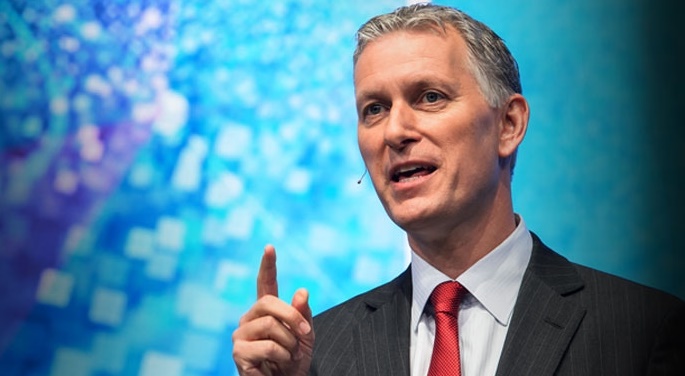Our world and the things we use every day are fast becoming digitised and with the advent of the Internet of Things (IoT) and artificial intelligence (AI), that trend is only going to accelerate.
From connected cars, homes and appliances to hospitals, agriculture, manufacturing and payments, it’s easy to see why IoT is forecasted to hit over 100 billion devices within the next five years as the technology becomes pervasive in industrial sectors worldwide.
But according to Gartner, as companies rush to build the underlying technology platform that will power the next wave of connected ‘things’, they run the risk of losing out to dominant ecosystem players like Apple and Google who are likely to stand between the company and its customers.
Gartner’s Senior VP of Research, Peter Sondergaard, says that regardless of whether it’s a business-to-consumer, business-to-business or a government entity, these large scale digital giants will likely dictate how these entities interact with their customers.
“From a business audience perspective, CEOs need to understand that what is happening now is the definition of the relationship that they will have with their customer or their citizen in the future,” he explains.
“Look at the automobile industry where car manufacturers resisted the threat of these digital giants for years. But in 2016, the industry disruption has accelerated - Apple CarPlay and AndroidAuto are running in the dashboards of over 20 car brands across one hundred models all of a sudden.”
Closer to home, the fight against the digital giants is currently playing out in the financial services sector where the major banks are refusing to integrate Apple’s cardless payments system, ApplePay. Instead, the likes of Commonwealth Bank, Westpac and NAB are pushing out their own digital wallet platforms for customers wishing to make cardless payments in-store using their iPhones.
Digital giants of the future
Gartner predicts that by 2021, 20 percent of all digital activities will involve at least one of the top seven digital giants which it defines as Apple, Google, Amazon, Facebook, Tencent, Baidu and Alibaba.
Sondergaard says that companies don’t want to lose the direct interaction with their customers.
“As a consumer, you’re thinking that’s great I can’t wait for that to happen because from the consumer’s perspective it will be much, much better experience. But businesses are saying, wait what about the threat to the enterprise? There’s no way I’m going to let that happen.”
As the likes of Apple and Google take their ecosystem business models and extend their tentacles into the connected world, Sondergaard says that businesses will need to make a critical choice to either join the digital giants or fight against them.
“If you’re a consumer company, you will most likely choose to work with the digital giants.”
On the enterprise side, Sondergaard sees every company competing in a business ecosystem until a dominant player emerges.
“I think that there will be a set of new players that will compete against the current digital players and will try to do the same in that they will stand between the business and the end customer but now in a B2B environment,” he says.
“The point is any large company could become that player because most companies, including many in Australia, are themselves developing an IoT platform that defines their company. They could open up that very same platform and actually make it available to their entire supply chains so that it becomes the dominant platform,” he adds.
“There’s nothing that says that any company cannot do what the digital giants are trying to do. It will be a tremendous battle that will be fought over the next 5 to 10 years.”
Connected farming
Gartner expects these digital giants to become pervasive in other digital activities such as healthcare and FinTech, but also in lesser known sectors like agriculture where IoT is expected to play a major role in increasing the quality and quantity of food production worldwide.
Connected tractors are already being sold to farmers and the next step for tractor companies is to build business ecosystems that will bring together dealers and maintenance companies to provide connected services that will enable farmers to run their equipment more efficiently. But Sondergaard says that the agriculture sector will really start to take some big steps forward when the business ecosystems around tractors, seed and fertiliser suppliers, and the commodities market all converge.
“Seed and fertiliser suppliers start to create their own ecosystem of digital services and some also recruit satellite services, analytics and weather information so that they can be precise in when and how to plant seeds and when these two ecosystems collide and collaborate it creates even more value.
“Imagine the farmer’s equipment is automatically driven by an analytics company with a proprietary algorithm which will plant exactly the right seed in exactly the right place and exactly the right depth leading to a higher crop yield.
“But let’s take it a step further - a financial commodities future company with its own digital ecosystem can add even more value by injecting crop prices into the ecosystem. The farmer will know exactly when and what mix of plants to crop. They’ll be perfectly timed to gain maximum crop yield and financial yield.”









